Sennheiser’s highest-tier open-back still offers a compelling package for the headphone aficionado, as long as thunderous sub-bass isn’t a must.
Back in the day, when someone in the market for a decent set of headphones had to choose between Sennheiser, Beyerdynamic, AKG, and Grado, the original HD800 was a bolt from the blue. Both the high price and looks were a brow riser.
Launched in 2009, seven years after the iconic HD650, the HD800 differed significantly from the HD650. Superbly comfy, insanely detailed (for the time), and tuned quite bright. The HD800S 8 came out years later, promising to build upon the original.
- Top-tier imaging rarely found elsewhere
- Faithfully renders recording ambiance
- Ergonomics to die for
- Good accessories
- Superb build quality
- Easily serviceable
- Stellar spare part support
- Diffuse-field tuning
- The treble is still too hot
- The low-end extension isn’t great
- THD in the low end makes it fuzzy
- A used HD800 is almost the same for a lot less
In this review, I’ll try to frame the HD800S in the contemporary headphone landscape. Is it still the go-to in the $1500 range, and are there alternatives for those looking to spend less?
Technical Specifications
- Form factor: Open-back, over-ear
- Drivers: 56mm dynamic ring radiators
- Nominal impedance: 300Ohm
- Sensitivity: 102dB/V at 1kHz
- Max power handling: 500mW continuos
- Frequency response: 4 – 51 000Hz (-10dB)
- Total Harmonic Distortion (THD): <0.02% at 1V/1kHz
- Cable entry: 2-pin ODU circular connectors
- Weight: 330g without cable
Packaging
The HD800S come in a black cardboard box kept safe in a glossy paper sleeve cover. Opening the box reveals the HD800S sitting on a velvet-covered foam cushion. Everything feels premium enough, but I prefer a suitable carry case over fancy boxes.
In the box
- The HD800S headphones
- 3m silver-plated OFC 6.35mm TRS cable
- 3m silver-plated OFC 4.4mm TRRS cable
- Cloth pouch
- USB stick containing the instruction manual (PDF) and individually measured diffuse-field frequency response
- Printed instruction manual
- Microfiber cloth
Design
Whilst the OG HD800 flaunted their German sci-fi looks, the HD800S are a bit more understated, with most of the parts being black. I prefer the new look, as the old one was pretty polarizing. The new black paint also has less of a tendency to flake off.
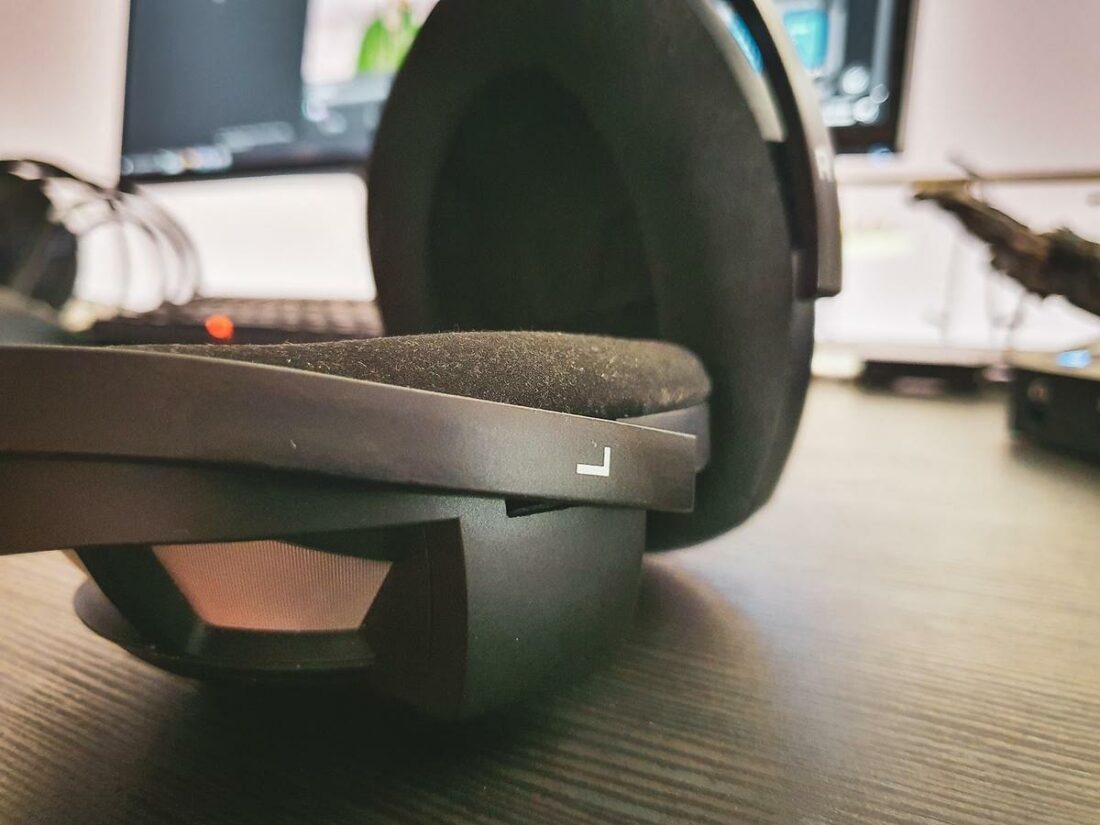
In hand, the HD800S just scream at you that they’re not mere headphones. Somehow Sennheiser engineers have made them feel light and high-tech, if not luxurious. Focal higher-end offerings feel more elegant than the HD800S but lack the high-tech feel.
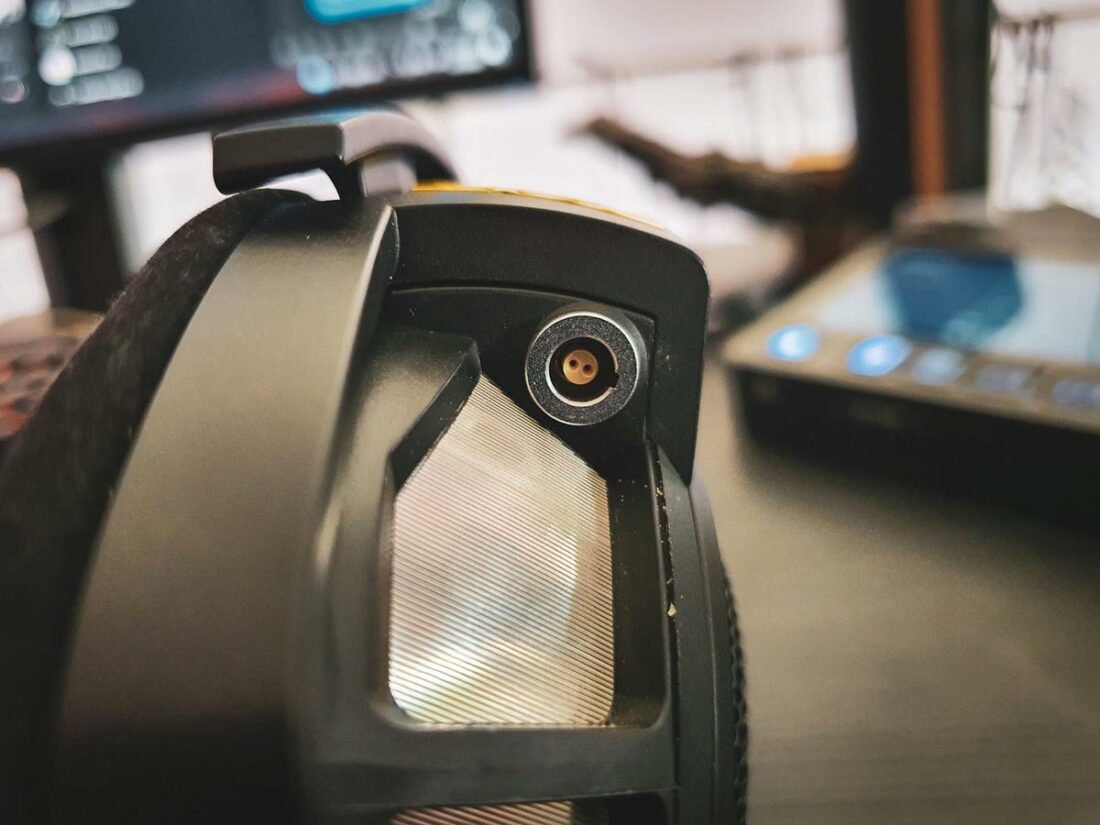
As customary with other Sennheiser headphones, the HD800S can be completely taken apart without tools. This feature is a godsend for professional use when something breaks and you need to service. All parts can be bought separately from Sennheiser, and earpads are affordable.
Cable
The Sennheiser HD800S comes with two cables – the unbalanced 6.35mm and the balanced Pentaconn 4.4mm. The only difference between the two is the termination at the end. The 3-meter length is a bit too long for desktop use, but the cable is pretty flexible and gets out of the way.
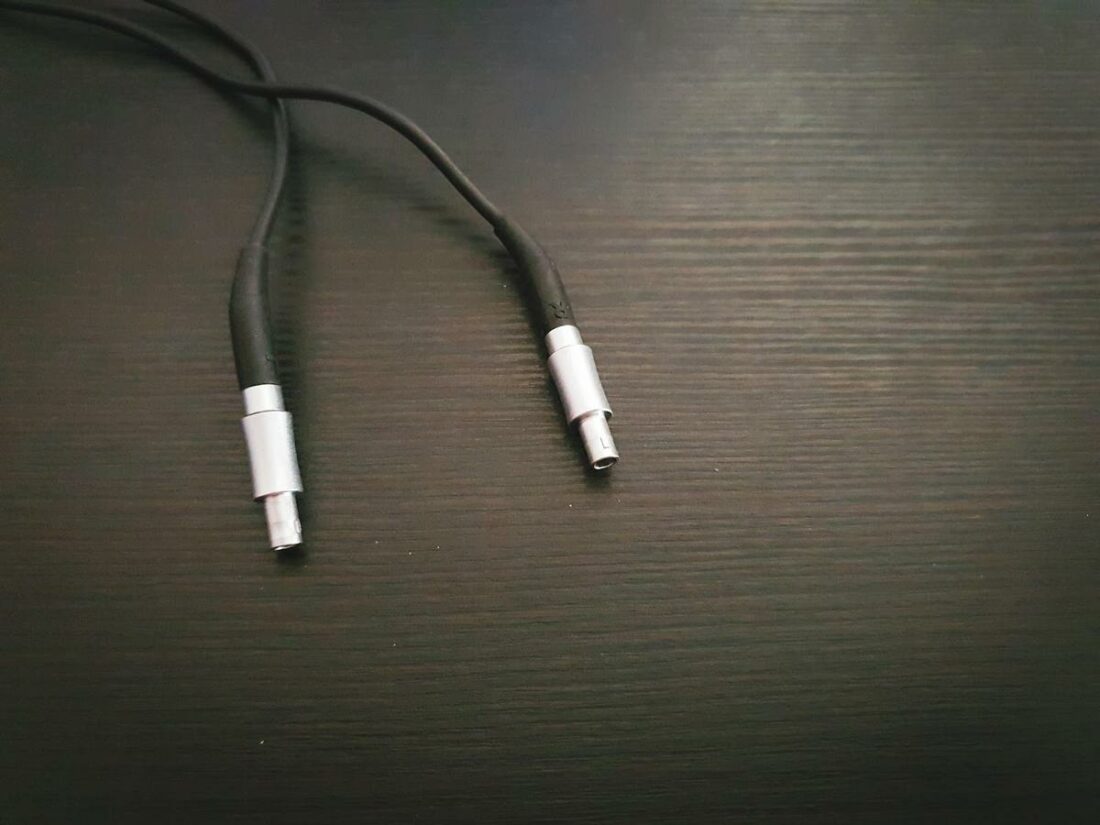
A third option – the 4-pin XLR cable (CH 800 S) can be bought separately from Sennheiser. Truth be told, I would have preferred the XLR cable to be included; however, when the HD800S launched, Pentaconn was the hot new connector, so that’s what we’re stuck with.
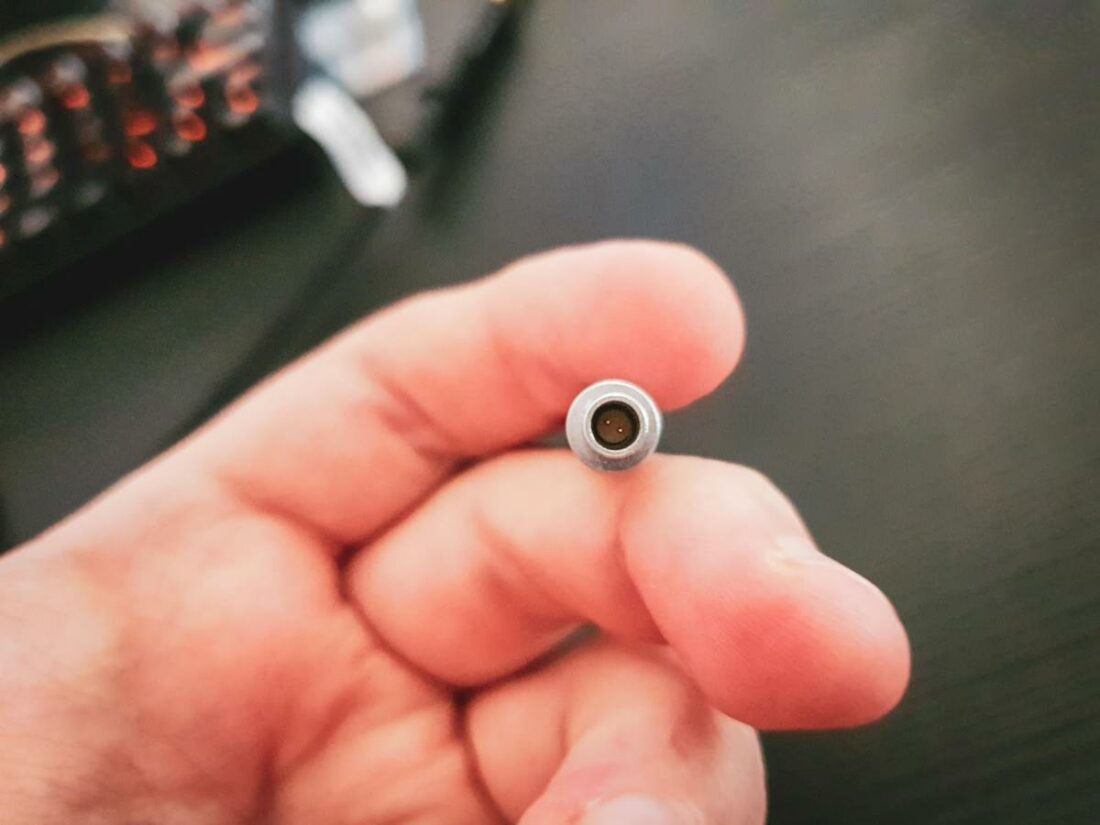
Comfort
In short – utterly stellar! Both the HD800 and HD800S have been my benchmarks for headphone comfort. The low weight, large earpads, and padded headband make the HD800S almost unnoticeable when wearing.
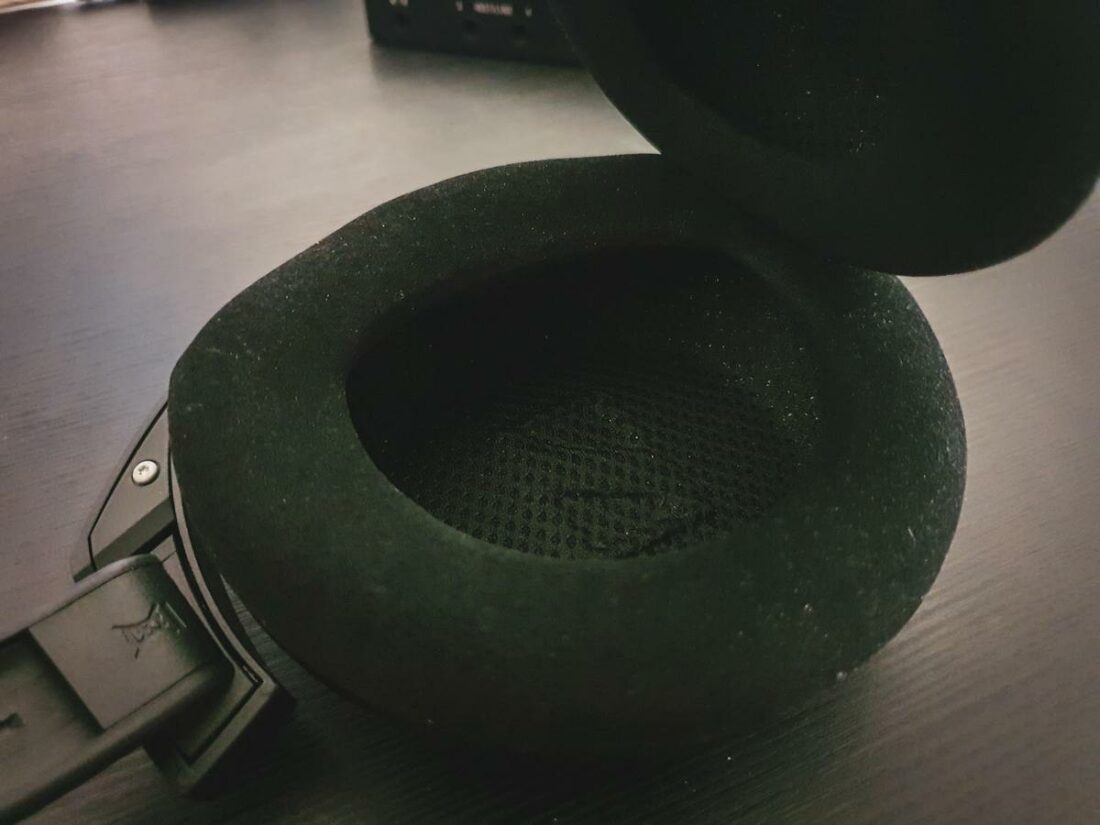
The clamping force is strong enough to keep the HD800S on my head when leaning forwards and during moderate headbanging. There’s no trace of cheek pain from pressure, and the top of my head is free of hotspots as well.
Internals
Sennheiser gets too little praise for developing the ring radiator driver for the HD800 and HD800S.
Usually, the HD800 gets thrown in with other dynamic headphones when, in reality, the ring radiator has a fundamentally different construction.
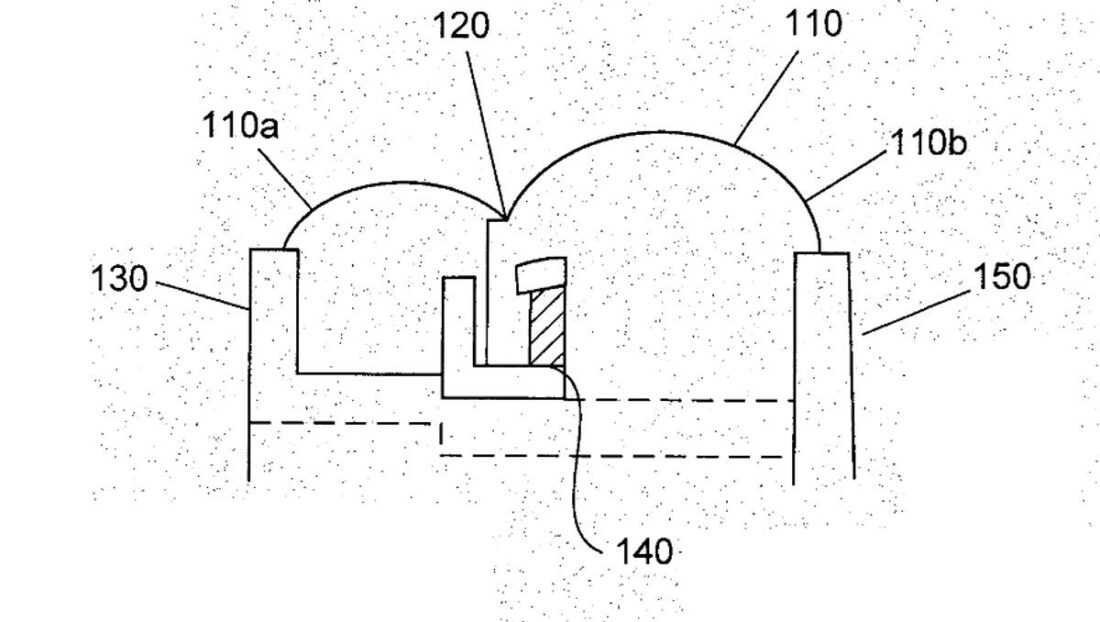
The ring radiator is basically two half-rolls of surround (110 and 110a) with the voice coil hung in the middle (120) near a permanent magnet (140).
In other words – it’s not just an oversized dynamic driver with the dust cap cut out. The diaphragm is fastened not only around the outer but also around the inner circumference.
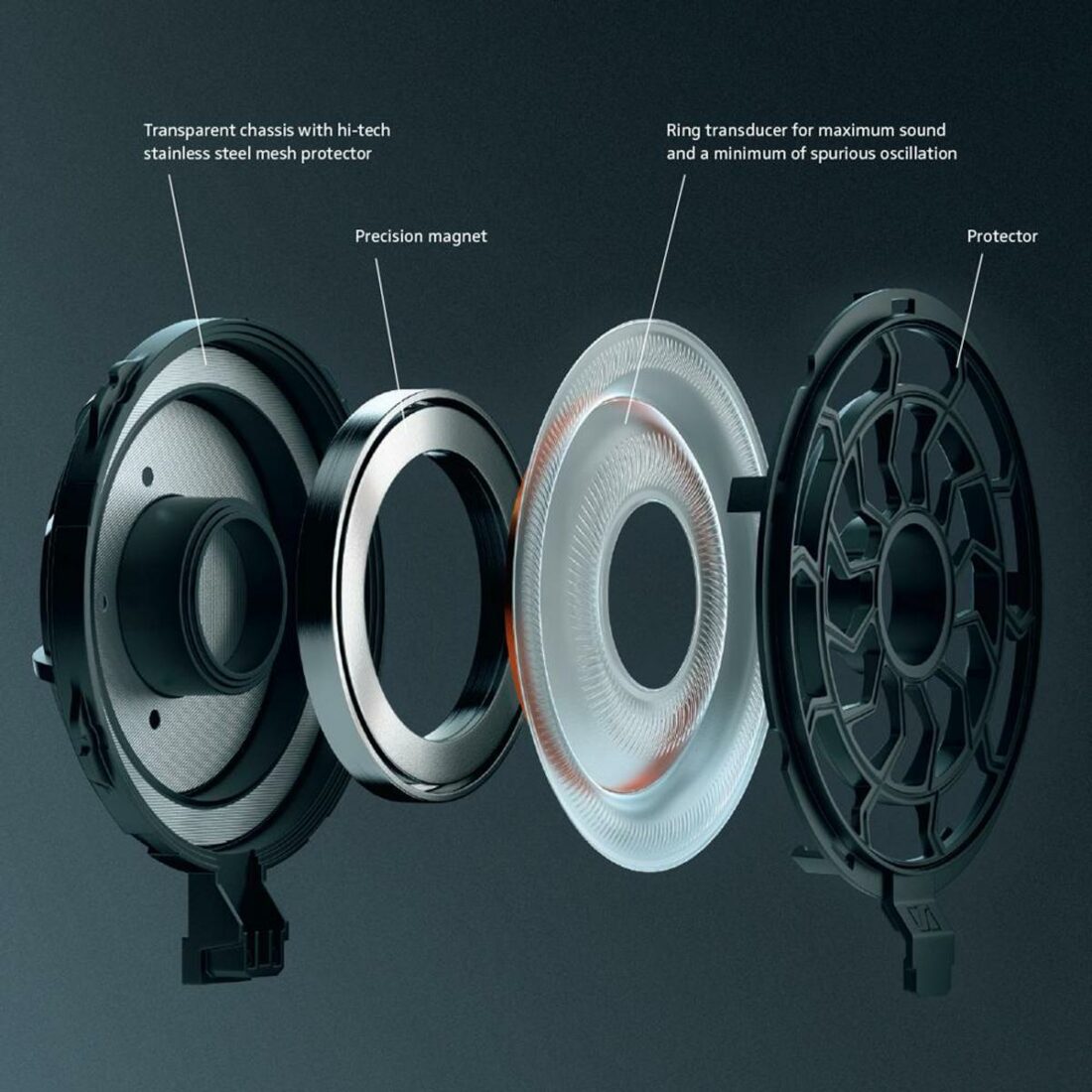
Despite the huge 56mm diameter, the driver doesn’t get much more effective piston area compared to the more common 40mm traditional drivers. This will be evident when I examine the low-end response of the HD800S.
Sennheiser HD800S Sound
This fancy acoustics talk would be for nothing if the Sennheiser HD800S doesn’t deliver when you put them on and play some tunes. And deliver it does. By no means is the HD800S perfect, but with the right recording, it’s a downright feast for the ears.
Sennheiser states that the HD800S are tuned to match the diffuse-field headphone target.
In short, the diffuse-field headphone tuning states that a pair of headphones should sound similar to what a flat-tuned speaker would sound to someone in a highly reflective room. It used to be an internationally recognized standard, at least until headphone mega boffins from Harman International Industries came up with their own target.
Scientifically speaking, the diffuse-field target makes sense. However, in real life, people find it bass-deficient and bright sounding. I find it curious that Sennheiser’s chief headphone designer Axel Grell had previously developed the HD600 and HD650, which are tuned more neutral.
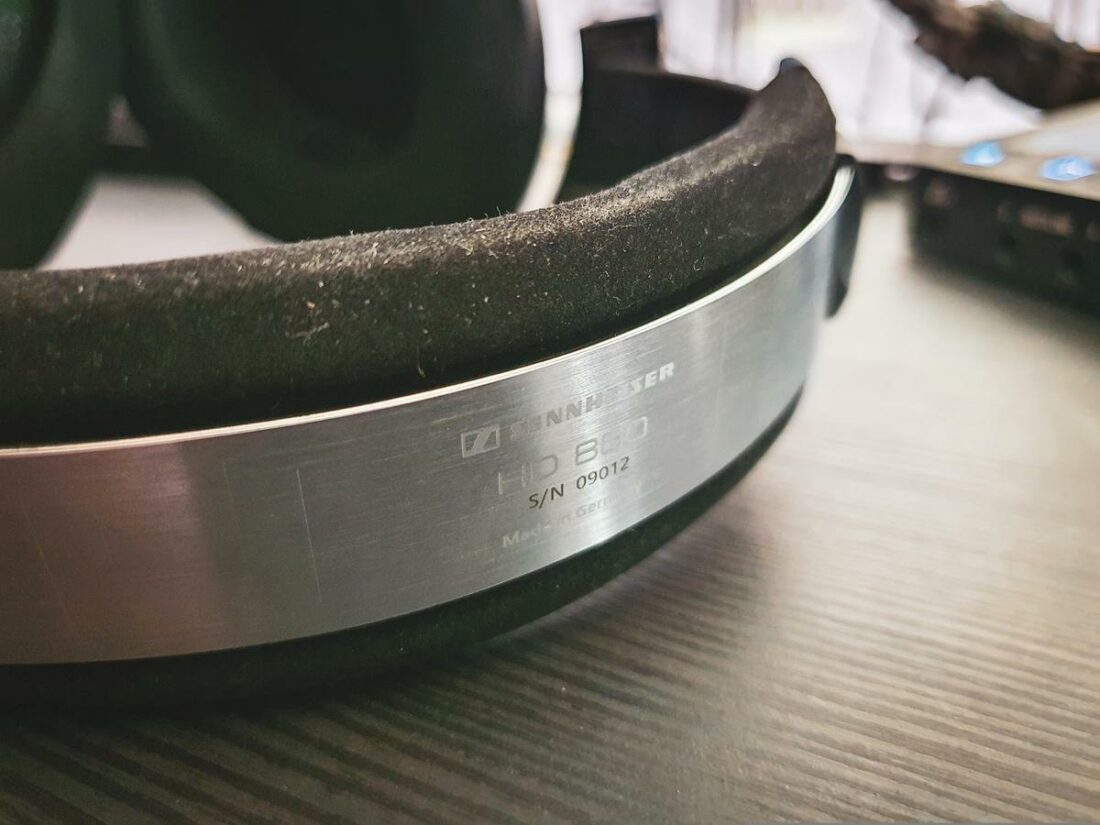
Maybe the HD800 was to compete with Beyerdynamic and AKG, which were big proponents of diffuse-field tuning at the time. When the original HD800 came out, it went head-to-head with the Beyerdynamic T1. Nowadays, the T1 has all but been forgotten, while the HD800 is a modern classic.
In any case, many headphone enthusiasts still long for the unicorn headphone – HD800 comfort, soundstage, and technical performance combined with the HD650 ear-friendly tuning.
The HD800S was expected to deliver this perfect combo, but they fell kind of short.
Tonal balance
Overall the Sennheiser HD800S give a pretty faithful representation of the audible spectrum, starting from bass right up to the upper mids. The main offender is the treble which is a good 6dB higher than the mids. While it tends to imbue the HD800S with sparkle, ear fatigue sets in quickly with more aggressive music like metal.
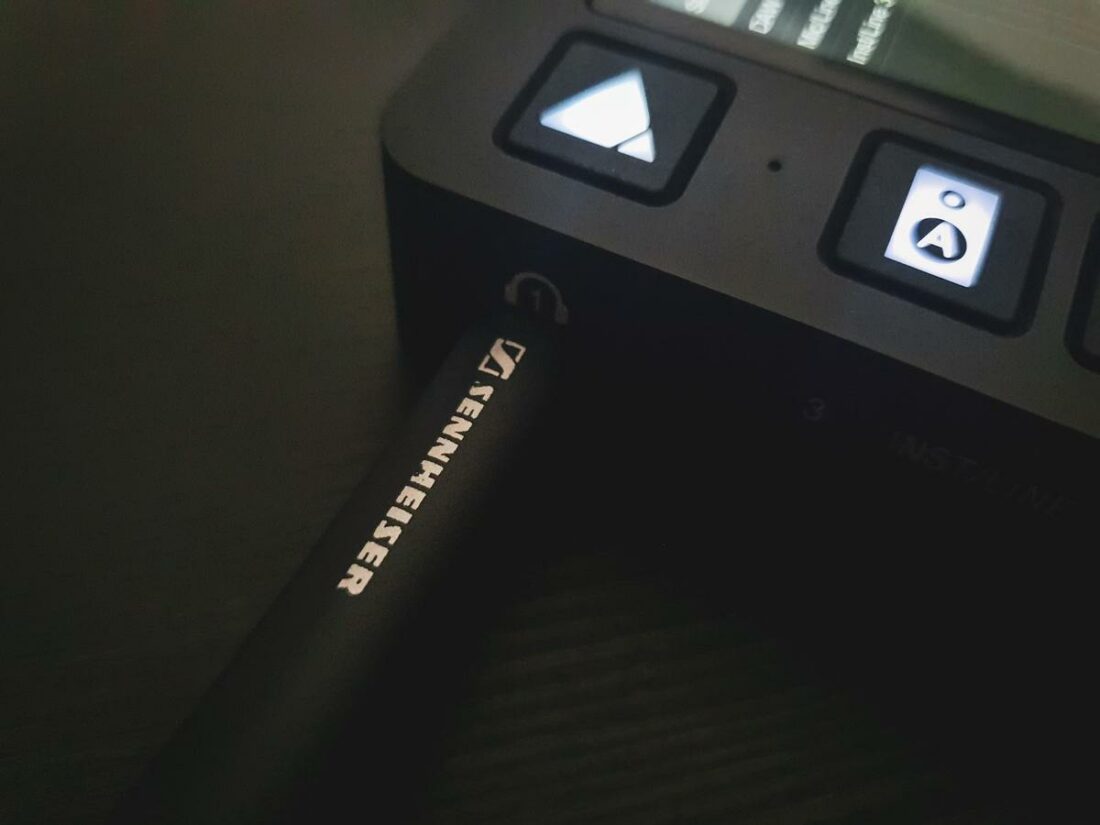
Bass
The HD800S, despite having a 56mm driver, have bass extension very much in line with other smaller dynamic driver open-backs.
The roll-off is gentler than the HD650, but more modern headphones like the Focal Clear MG will beat the HD800S by about 3dB at the very bottom. Most planar magnetics, like the Audeze LCD-2, will also offer a better sub-bass extension.
Going further up from sub-bass to bass-proper and mid-bass, the HD800S is very enjoyable. With most music, I don’t really miss anything. There is plenty of impact and dynamism when the recording calls for it.
Midrange
With a good recording of voices or strings, the HD800S will render the music with superb realism.
Like most Sennheiser open-back headphones, the mids are hard to fault. Linearity is perfect, with a bit of scoop going on in the upper mids. In any case, the scoop is slight enough not to take anything from the listening experience.
Treble
This is where things get tricky. The HD800S are on the bright side, no doubt about it.
They are not the face-tweeter the old HD800 was, but they can get annoying with some recordings or gear combos.
I find 5kHz and up to be around 6dB too hot for my liking. With less busy music like minimalistic jazz or classical, it’s not a problem; however, if you put some metal or hard rock, the treble is not too pleasant. There’s also a noticeable peak around 10kHz which can make you wince if it’s energized.
The treble is my main beef with the HD800S, and I can imagine this headphone steering my musical choices toward darker-sounding or less instrumentally dense recordings. Y’know – audiophile music! And that’s a major no-no in my book.
Technicalities
While in today’s terms, the HD800S aren’t the audio microscope the HD800 are, the listening experience is still breathtaking.
Low-end clarity is something the HD800S struggle with due to the driver running out of steam. I wasn’t too lucky eking more bass out of it with EQ, as distortion would creep up fast.
Much of the often breathtaking listening experience the HD800S owes to its imaging and headstaging capabilities.
To this day, I haven’t heard anything that beats them in terms of image depth and width. Neither the Utopia nor the legendary AKG K1000 are able to touch the HD800S in this regard.
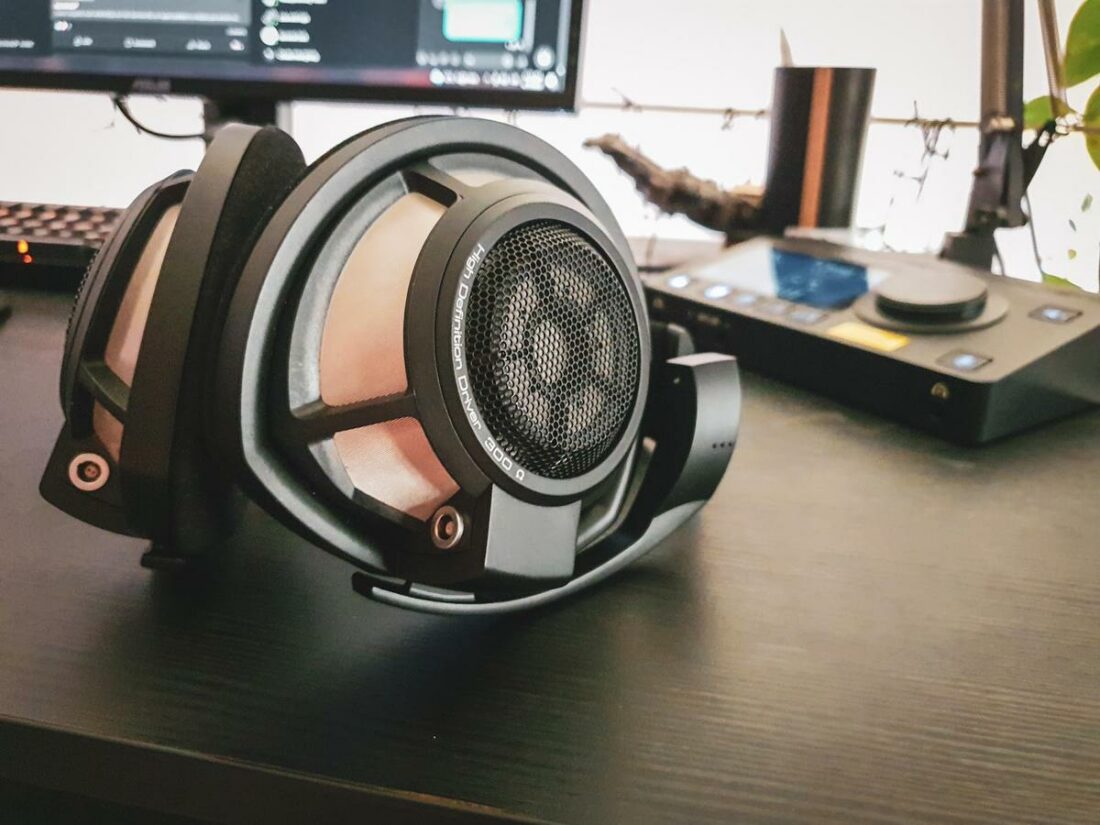
As for sheer resolution, Focal’s metal driver open-backs have the HD800S beat pretty squarely. They are also less bright, which makes these headphones more versatile genre-wise. Luckily, the HD800S can have the brightness EQ’ed away, and digital attenuation will also improve THD performance.
Where to Buy
Conclusion
If I’d like to blow someone’s socks off with a pair of headphones, I’d probably reach for the HD800S 90% of the time. The listening experience is unabashedly high-fidelity, the resolution is more than decent, and headstaging is almost holographic. Anyone interested in headphones should audition the HD800S and maybe even buy a pair.
What keeps the HD800S from scoring higher is the now-anachronistic diffuse-field tuning. Most people will find them too bright. Others will yearn for more low-end. This limits the genre versatility of the HD800S.
In the end, the biggest adversary to the HD800S isn’t whatever other manufacturers are releasing. A well-cared-for HD800 can be found for about half what the HD800S cost new, and they can be EQ’ed to sound better than their predecessor. For more handy folk or DSP-averse, some mods can improve the treble of the HD800.
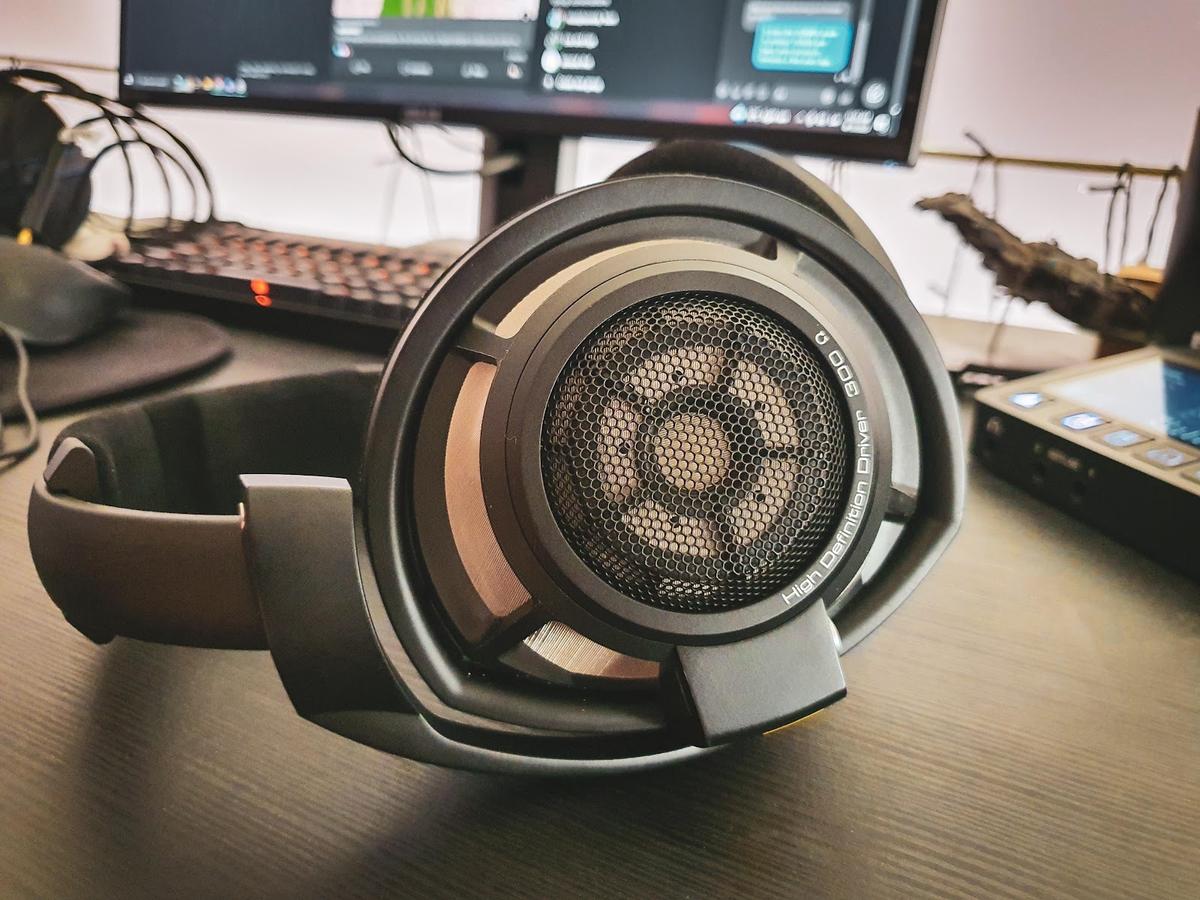
Heyy, great review.
From my anecdotal experience I didn’t find them bright at all and my ears are pretty sensitive to sibilance— no symptoms with the 800 S.
I do share the feeling that low end could use some help. What I did was use Peace App to apply a Harman curve specifically for the 800 S.
Use of EQ as well as using Benchmark DAC3L & HPA4 lets the music shine faithfully to the artist and engineers.
Cheers,
Kevo
Thanks, Kevo!
The HD800S is an improvement over the original in terms of brightness. I’d still wish for a less hot 5kHz or so. I listen to a lot of harsh electronic music and metal. There the extra zing tends to hurt after some time.
EQ is the obvious way out. But then – why not get the HD800 and fix that?